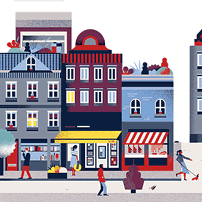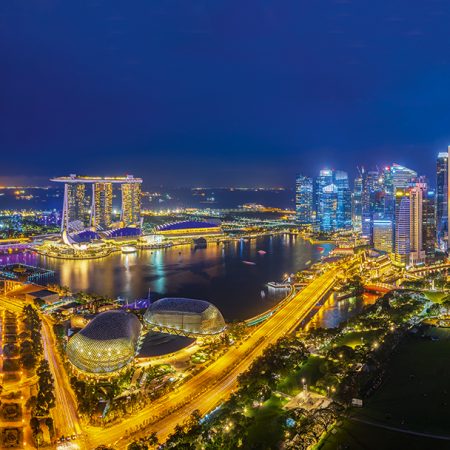Build dense, but mid-rise, argues Hank Dittmar, former Chairman of the Congress for the New Urbanism
Again and again, it’s been demonstrated that you can achieve the densities needed to support public transport and greener living with mid-rise, mixed-use blocks like those in London’s Marylebone, the centre of Paris, New York’s Greenwich Village or Boston’s Back Bay. These areas all maintain high values many decades after they were built, and they support a lively mix of shops, cafés and work spaces, ensuring safe, walkable, lively streets.
A study by Savills for the Prince’s Foundation found that historic urbanism and traditional urbanism consistently generated higher returns on sale and resale than conventional suburban development.
Today’s fashion for building high-rise apartment towers and selling them to investors seemed initially to guarantee high returns. The glass-sheathed tower is familiar to buyers from Singapore and other Asian cities, and those who bought off plan were promised 20-30% returns upon completion. Now we are seeing a very full supply of these buildings in hot cities from Vancouver to London to Sydney. But hundreds of towers are approved and not yet built, possibly exceeding the demand for luxury and buy-to-let flats.
Low- to mid-rise housing at various price points are what we need more of: terraces and row houses, four-to-eight storey mansion flats, and small mixed-use buildings. In short, urbanism.
The benefits of high-rise development, from Steve Watts, Chair, Council on Tall Buildings and Urban Habitat
An explosion in population and the advance of megacities means that the world will need to accommodate more city dwellers with finite resources, including land. This implies some form of urban densification, and tall buildings will be part of the answer – but not the end-all solution. The key will be to get a good mix of stock, with just as much attention paid to the spaces in between, to ensure that there is both a physical and social infrastructure. In many global cities, questions are being asked about the affordability of luxury residential towers in the pipeline, and the impacts they will have on social cohesion.
The right tall buildings in the right places can certainly enhance the environment in its widest sense, as long as they are designed well, and within the framework of a strategic urban plan. As well as being functional, cities also need an allure, and well-designed tall buildings can be delightful as well as hard-working.
From a sustainability perspective, the answer is not always straightforward, with the increased resources consumed in building high balanced by the more efficient use of transport infrastructure that they encourage. In years to come, as the tension between population numbers and resources increases, a high-rise solution may take a different turn; for example, as high-level building connections – such as sky streets – replicate the street life we traditionally find on the ground. A technological step-change may also make tall buildings lighter, more efficient and more cost-effective to produce.




